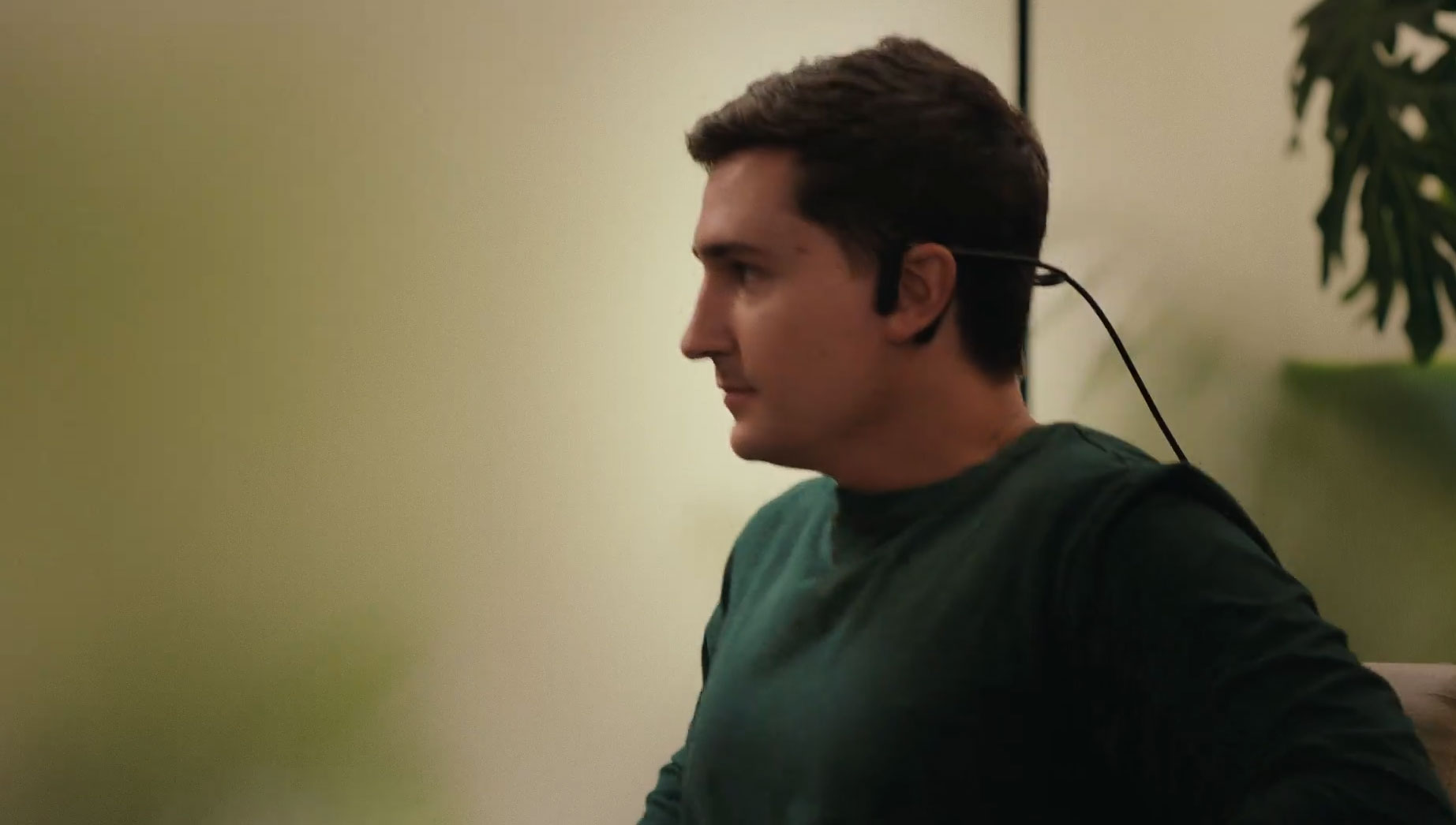Alterego demoes ‘world’s first near-telepathic wearable' that enables 'typing at the speed of thought' other abilities — device said to enable silent communication with others, control devices hands-free, and restore speech for impaired
Alterego also enables frictionless language translation

A start-up has come out of stealth with a demonstration of what it claims to be “the world’s first near-telepathic wearable that enables people to communicate silently, seamlessly, and at the speed of thought.” Alterego is the name of the new firm, and it says it will pioneer how humans interact with tech – and each other.
Introducing Alterego: the world’s first near-telepathic wearable that enables silent communication at the speed of thought. Alterego makes AI an extension of the human mind.We’ve made several breakthroughs since our work started at MIT. We’re announcing those today. pic.twitter.com/KX5mxUIBAkSeptember 8, 2025
In the embedded video above, you can see a demonstration of the Alterego wearable hosted by Arnav Kapur, CEO and co-founder, who is joined by Max Newlon, COO and co-founder of the company. Kapur started work on the first versions of the Alterego wearable at MIT Media Lab. Newlon previously grew a neurotech startup incubated in the Harvard Innovation Labs into a $1bn company.
The key claimed features of Alterego wearable are:
- Type at the speed of thought (no keyboard required)
- Restore speech capability for those with impairments
- Silently search the internet
- Control apps and devices hands-free
- Ask questions about the world around you (via on-device cameras)
- Hold silent, private conversations with others
- Unlock new levels of human-AI collaboration
The demo
At the time of writing, we haven’t had access to any Alterego wearable device images. We know that it is worn around the ears like spectacles, but rests largely on the back of the head, as we can see this in the video presentation.
To start the demonstration, Kapur begins to send text by the power of thought. Of course, this is easily extended to adding notes and reminders to a smart device app.
There are also “tiny cameras built in” to the device to make sense of the surrounding environment. We see this demonstrated when Kapur holds a postcard in his hands, points to an image detail and silently asks about it. Next we see more smart device integration, as the CEO tells the wearable AI assistant to set a reminder based on the interaction.
Next up we see Newlon join Kapur, put on his headset and take part in a silent conversation with Kapur. At this time, we get a momentary but better glimpse at the size of the (currently) wired wearable device. The pair talk about the benefits of ‘telepathic’ communications, in noisy environments, for example.
Get Tom's Hardware's best news and in-depth reviews, straight to your inbox.
The last demo in the video shows Kapur communicating with a Mandarin Chinese speaker. Communication seems slick and friction free – even between different languages – thanks to a translation layer.
The technology
Alterego’s ‘Silent Sense’ technology is still very much under wraps, in technical terms. However, the company shares some important features of the technology.
For example, as it is described, Silent Sense avoids broadcasting your deepest thoughts by “passively detecting the downstream subtle signals your brain sends to your speech system, before words are spoken aloud.” The Alterego team stress that “It never reads your thoughts.”
To wrap up, this is the first glimpse we have had at this ‘moonshot’ and while it seems impressive we should retain some cynicism about the true ease-of-use and capabilities of Alterego. There have been plenty of other AI flops in recent years that had promising starts. However, we would like to be optimistic that something such as Alterego, a non-invasive technology, could give the likes of Neuralink a run for their money in some potential use cases.
Follow Tom's Hardware on Google News, or add us as a preferred source, to get our up-to-date news, analysis, and reviews in your feeds. Make sure to click the Follow button!

Mark Tyson is a news editor at Tom's Hardware. He enjoys covering the full breadth of PC tech; from business and semiconductor design to products approaching the edge of reason.
-
Exploding PSU I read the company name as "Abstergo" at first and was like "Wait... they exist? And they actually made this neural-related thingy an actual thing?"Reply
Honestly though, watched the demo video, and it's really cool. The concept is incredible, but why do I feel like we still a long way until the tech is actually viable? I know nothing about biology and all that, but I expect there's got to be a lot of synchronisations between what you think and what the device actually "interpret" before you can even start using it.. -
Zaranthos I've been seeing similar tech (thought controlled games, etc.) since the late 90's and have yet to see it result in widespread use anywhere. I'm sure as technology advances there are more options but I doubt external devices will compete with Neuralink anytime soon. Neualink has hardwired access to your brain and any wearable has to use some external sensors to "sniff" data. Even Neuralink requires training and I'm sure wearable devices do as well but likely with less success.Reply -
bill001g Have they also invented cold fusion. You can trust nothing now days way to many scammers. Now with AI you can't even trust your own eyes since there is little that can not be faked.Reply
When you compare what they claim to elon musk brain implants that do not even come close to this ability you get very suspect. -
sadsteve Heh, with the cable at the back of the head, my first thought was that this is the first step to the Matrix.Reply -
Stomx Reply
Yea, looks like a bsbill001g said:Have they also invented cold fusion. You can trust nothing now days way to many scammers. Now with AI you can't even trust your own eyes since there is little that can not be faked.
When you compare what they claim to elon musk brain implants that do not even come close to this ability you get very suspect. -
thesyndrome As much as I'd love to believe that this is real, I can't shake the feeling that the curated video could EASILY just be completely fake, like everything they are doing is just being remotely done manually by a guy on a computer in the next room over who has the script and is watching the recording like to know when to type out a text message, or to play the pre-recorded audio back and forth for the Chinese translation demo.Reply
They need to give media outlets a chance to try this out without a member of the company looking over their shoulder before I will consider this anything more than a "proof of concept" advert for investors.
